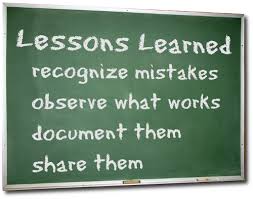(Note: This blog post was written by CFJC Coach Janna Davis. This helps to understand the first person references.)
 As most of you probably know, I was diagnosed with a pretty severe fibular (lower leg) stress fracture mid-July of 2017. I didn’t think it was broken at first… I even continued to work out for a week limping around. I had a previous injury in my left ankle with torn ligaments so I just assumed the pain had to do with that. However, I knew this felt different. It was a deeper pain, much sharper pain. With no signs of improvement after five days, I talked to Dr. Lauren about it while I was WOD’ing, and she thought it would be a good idea to get it X-Rayed just to be sure it wasn’t broken. Surprisingly, I listened to her, which meant I really knew something wasn’t right because I’m usually stubborn and just keep pushing through the pain. Unfortunately, it wasn’t just my imagination… it was a stress fracture. My heart was broken.
As most of you probably know, I was diagnosed with a pretty severe fibular (lower leg) stress fracture mid-July of 2017. I didn’t think it was broken at first… I even continued to work out for a week limping around. I had a previous injury in my left ankle with torn ligaments so I just assumed the pain had to do with that. However, I knew this felt different. It was a deeper pain, much sharper pain. With no signs of improvement after five days, I talked to Dr. Lauren about it while I was WOD’ing, and she thought it would be a good idea to get it X-Rayed just to be sure it wasn’t broken. Surprisingly, I listened to her, which meant I really knew something wasn’t right because I’m usually stubborn and just keep pushing through the pain. Unfortunately, it wasn’t just my imagination… it was a stress fracture. My heart was broken.
The fibula is the long, thin and lateral bone of the lower leg. It runs parallel to the tibia, or shin bone, and plays a significant role in stabilizing the ankle and supporting the muscles of the lower leg.
The diagnosis and doctor’s advice was a tough pill to swallow. Doctors told me it would be 3-4 months, at least, before I could bear weight on my left leg (meaning crutches). Then I’d have to wear a boot and then it would be another 6-8 months before I could do many things without pain and introduce impact exercises. “Blah blah blah” is what I heard from the doctors because none of that applied to ME, at least that’s what I was thinking. I thought I would be on crutches for a few weeks, boot maybe for a couple more weeks, and then I would be back to 100% in a less than a month. Why? I’m different, right!? It takes “normal” people that long to recover, but not me – I’m not normal. I’ll be good as new before I know it. Boy was I wrong, and quite disappointed when the reality set in of how long this injury would last.
I’m finally boot-free and slowly attempting to return to my beloved WOD’s. It’s been a longer process than I had hoped for. This was my first real injury since starting CrossFit, so this has been a learning experience for me. Thank you all for your words of encouragement along the way. I hope by sharing my experience, you too can learn something.
Reflecting back on these past six months, I can honestly say that I’ve learned quite a few things in regards to how to work through an injury. One of which is seeing each challenge, obstacle or set-back in life, as a learning experience. Yay – we all love learning experiences don’t we?!
Let’s start pre-injury. What did I do wrong? How could I have prevented this? In hindsight, the answer came pretty easily: overtraining with no rest/recovery days. We all know the sport we love can be addicting. We love the community, the feeling you get after a WOD, setting PR’s… it was hard for me to take a day away from that. I kept wanting more… I wanted to be stronger, faster, and better at the key skills we practice. How was I going to get there taking a rest day, right? WRONG.
And by the way, I knew that I SHOULD be taking rest days. I thought my body could keep up and I kept telling myself “that will never happen to ME” …something I’m pretty sure some of you tell yourself to justify your lack of rest days. I know now that rest days are just as important as training days, but I learned the hard way. That’s why I wrote the blog about rest days which you can find at https://crossfit-johnscreek.com/two-things-that-are-more-important-than-hard-work/.
Once diagnosed with the stress fracture, I tried to keep to my routine as much as possible, which meant still hitting my 5:00/6:00am class. I justified it by telling myself that routine is a good thing, and this will keep me moving. I tried to train around the injury in the beginning without taking any time off. Bad decision. I most likely extended my recovery time. In hindsight, I should have taken several weeks completely off, focusing on rest and good nutrition, per the doctor’s instructions.
Of course training around an injury can be just fine, as long as you are doing it in a safe manner (always consult with your doctors and coaches first) but since I hadn’t taken a rest day in a while, it may have been a better idea for me to take a short break before starting to train around it. This leads me to my next lesson…
Listen. Listen to your body and your coaches; they care about you. As a coach I know that if an athlete feels pain during a movement, they should stop the movement immediately and modify. Always seek the advice of a coach when you are injured to make sure that your movements are safe and will not worsen your injury. But then you have to listen to that advice! Listen to your body and the people who want the best for you. I did movements where I felt pain, and continued to do them. I’m very stubborn and didn’t listen. Lesson learned.
I believe the most important part of coping with an injury is staying positive. Your mindset is one of the few things you can control in this process (in addition to rest and nutrition). You can’t control how long your body takes to heal, but you can keep a positive attitude. Set goals for something you can do that will not hinder your injury, but keep you active.
There are many things you can do to keep a positive attitude that don’t have to involve the gym as well. Find a new hobby, read books, focus on mobility and rehab, etc. The point is, don’t sit on the couch and feel sorry for yourself. Stay busy and make the best out of your situation.
Lastly, I have learned that an injury is a very humbling experience. I know I will be scaling weights and movements for a while so as to not re-injure myself. However, I am quickly realizing that I need to “scale” my expectations as well. I will not be setting PR’s anytime soon. I won’t come close to my best Fran or Helen time for a while. This, I believe, is the toughest part of all. Not getting down on myself because I’m not where I was pre-injury. I have to remind myself that this is a process, and I will have to slowly build my strength and endurance back. I did not get there overnight when I started CrossFit, and I will not get there overnight now. However, I will take rest days. I will focus more on mobility. I will listen to my body. And I will do my best to set my expectations at a reasonable level. Oh, and let’s not forget about patience. Not one of my better qualities, but I am learning to be patient as well.
Injuries are tough. We never plan for them, but we can do our best to prevent them from happening. Be smart. Listen to your body. And if you do find yourself with an injury along the way, work smart and keep a positive attitude. Find ways to learn from it. Fight back to become even stronger than you were before, both mentally and physically. Yes, I can and WILL do it, and so can you!
“When your desires are strong enough, you will appear to possess superhuman powers to achieve.” – Napoleon Hill
WRITTEN BY: Janna Davis


